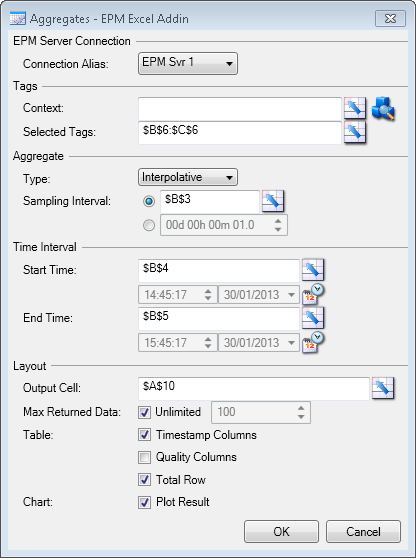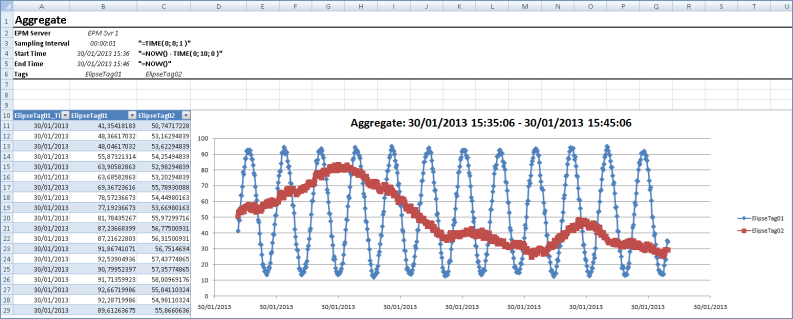1.Select in Excel the initial cell to display query data. The A10 cell corresponds to the table's upper left corner.
2.Click Aggregate ![]() on the Ribbon to open a window with the options related to this query.
on the Ribbon to open a window with the options related to this query.
3.These options can be filled directly on this window or by informing a reference to the spreadsheet cells, according to the next figure.

Aggregate-type configurations
NOTES |
•The variables to query can be referenced directly by name, according to this example, or by a contextualized reference, which can be retrieved using the search window by clicking •In the Output Cell option, users can select another initial cell, on the upper left corner, to display data. •When selected, the Plot Result option automatically creates a chart with the Dataset data. |
4.Data is displayed in Excel's table format, starting on the top left corner, according to the Output Cell option. The next figure shows the result of this query. The Refresh and Aggregate options on the Ribbon are enabled, because focus is on the resulting Excel table for this query. In this case, as the Plot Result option was selected, a trend chart of data is also displayed.

Result of an Aggregate type in Excel
NOTE |
A common practice when creating reports is using references of spreadsheet cells as query arguments, so that changing parameters becomes fast and practical, in addition to viewing information related to the displayed query. |